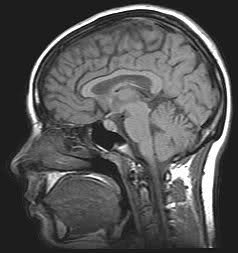We may think that we fully understand the implications of exercise on the health of our minds and bodies, but each day brings new discoveries that further drive home the point. A recent study has shown how the lack of adequate exercise can have adverse mental as well as physical effects.
For many years, researchers believed that the brain could not be changed either positively or negatively after adolescence, but we now know that the brain can be reshaped to some degree either positively or negatively over the course of our lives. Among the most prominent drivers of this change happens to be exercise, or the lack of it. The effects of inactivity on the brain were recently studied by researchers at Wayne State University School of Medicine and other institutions utilizing rats as the subjects.
 The study, which was recently published in The Journal of Comparative Neurology, found that being sedentary changes the shape of certain neurons in ways that significantly affect not just the brain but the heart as well. The findings go a long way in explaining the high risks of a sedentary lifestyle.
The study, which was recently published in The Journal of Comparative Neurology, found that being sedentary changes the shape of certain neurons in ways that significantly affect not just the brain but the heart as well. The findings go a long way in explaining the high risks of a sedentary lifestyle.
In the study, researchers took a dozen rats and let half run at will on running wheels while the other half were housed in cages without wheels where they remained sedentary.
After almost three months of resting or running, the animals were injected with a special dye that colors certain neurons in the brain’s rostral ventrolateral medulla region. This region controls regulation of nervous system functions such as breathing, blood pressure modulation, and other unconscious activities that are central to life in rats, and more importantly, people.
A well-regulated sympathetic nervous system correctly directs blood vessels to widen or contract as needed and blood to flow as part of our ancient fight-or-flight response. If it is overly responsive, it can be a contributing factor to cardiovascular damage and high blood pressure.
In the study, researchers found that after 12 weeks, the shape of neurons in that region of the brain were noticeably different in the two groups of rats. While the running rats had retained the same neuron shape as before the study, the neurons in that region of the brains of the sedentary rats had formed new branches. This made them more sensitive to stimuli and prone to sending erratic messages to the nervous system, which leads to the potential increase of blood pressure and cardiovascular damage.
The takeaway is that lack of exercise can negatively affect our brains on the cellular level, which can set the stage for severe chronic conditions that affect life chances and health. Like most studies of this kind, more research needs to be done to further prove the findings and reveal further details.
Although some of those studies will focus on cause and effect, others will focus on prevention from a practical perspective. Harvard Medical School recently published an article that provided a helpful list of seven preventive steps for memory loss with exercise as the first step.
A recent study conducted by researchers within the Department of Psychology, Neuroscience Institute at Princeton University showed the correlation between exercise and stress. The study, which was published in The Journal of Neuroscience, may be a little technical for many of us, so it was nicely fleshed out in a news article on the Princeton University Website.
While pointing out research studies such as this are often effectively “preaching to the choir,” when it comes to exercise, they collectively form the basis of broad reaching actions that change the way we live in subtle ways. The end result is a higher percentage of people that engage in exercise for healthier lives who may never understand or care about the science behind the reasons why.



